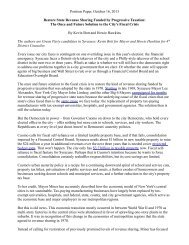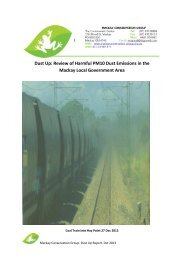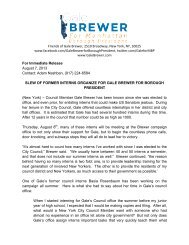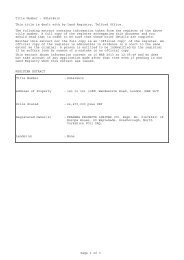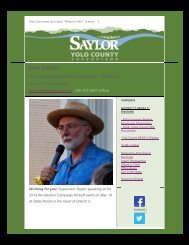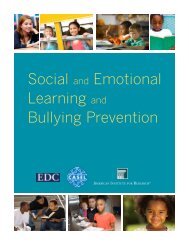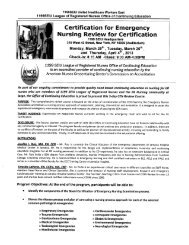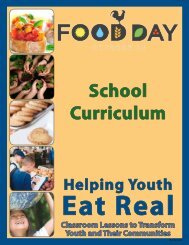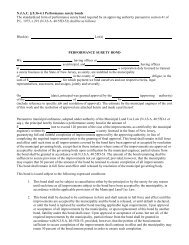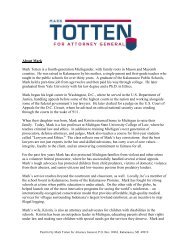You also want an ePaper? Increase the reach of your titles
YUMPU automatically turns print PDFs into web optimized ePapers that Google loves.
Tips for Modifying the Lessons for Elementary Grades<br />
Lesson 4: Navigate the Environment<br />
Preparation: Read the Navigate the Environment lesson plan<br />
on pages 54–55.<br />
Teaching Tips:<br />
Lesson 5: Be an Advocate<br />
• Review the <strong>Food</strong> <strong>Day</strong> Eating Goals of “Eat Real,” “Mostly Plants,” and<br />
“Not Too Much.” Ask students how they are doing on their action<br />
plans. Use the blank activity sheets from Lessons 1–3 as props.<br />
• Introduce that “Navigate the Environment” means to seek out and<br />
choose more whole foods at school, at home and from stores, gardens,<br />
and farms in their neighborhood.<br />
• Hold up each of the Navigate the Environment cards (pages 57–58).<br />
First, ask the students where they can find fruits and vegetables (as<br />
pictured in the first two cards) then use the fast food and supermarket<br />
cards to show that some foods that are in our environment are<br />
not best to have all the time. Discuss different places where you can<br />
get whole foods in your neighborhood (use a map if appropriate).<br />
• After the discussion, have students complete the Seeking Out Real<br />
<strong>Food</strong> Action Plan activity sheet (page 76). First, list places to get<br />
whole foods. Second, list foods available at each place. Third, have<br />
students circle all the foods they will eat in the next week.<br />
Preparation: Read the Be an Advocate lesson plan on pages<br />
61–62.<br />
Teaching Tips:<br />
• Ask students how they are doing on their Seeking Out Real <strong>Food</strong> Action<br />
Plan activity sheet.<br />
• Create posters or do a performance. For young children, a great way<br />
to change the environment is to teach others. Have your student make<br />
posters or plan and do a performance that they can use to teach others<br />
at school and at home about the <strong>Food</strong> <strong>Day</strong> Eating Goals.<br />
• Conduct an advocacy project. If you think your class can conduct an<br />
additional advocacy project, use the <strong>Food</strong> Environment Advocacy<br />
Project activity sheet (page 65) to plan their project.<br />
• Use the Pledging to the <strong>Food</strong> <strong>Day</strong> Eating Goals activity sheet (page<br />
77) for students to decide how they will keep practicing the <strong>Food</strong> <strong>Day</strong><br />
Eating Goals. Encourage students to show this sheet to their families<br />
so they can advocate for change in their families as well.<br />
70 | <strong>Food</strong> <strong>Day</strong> Lessons



